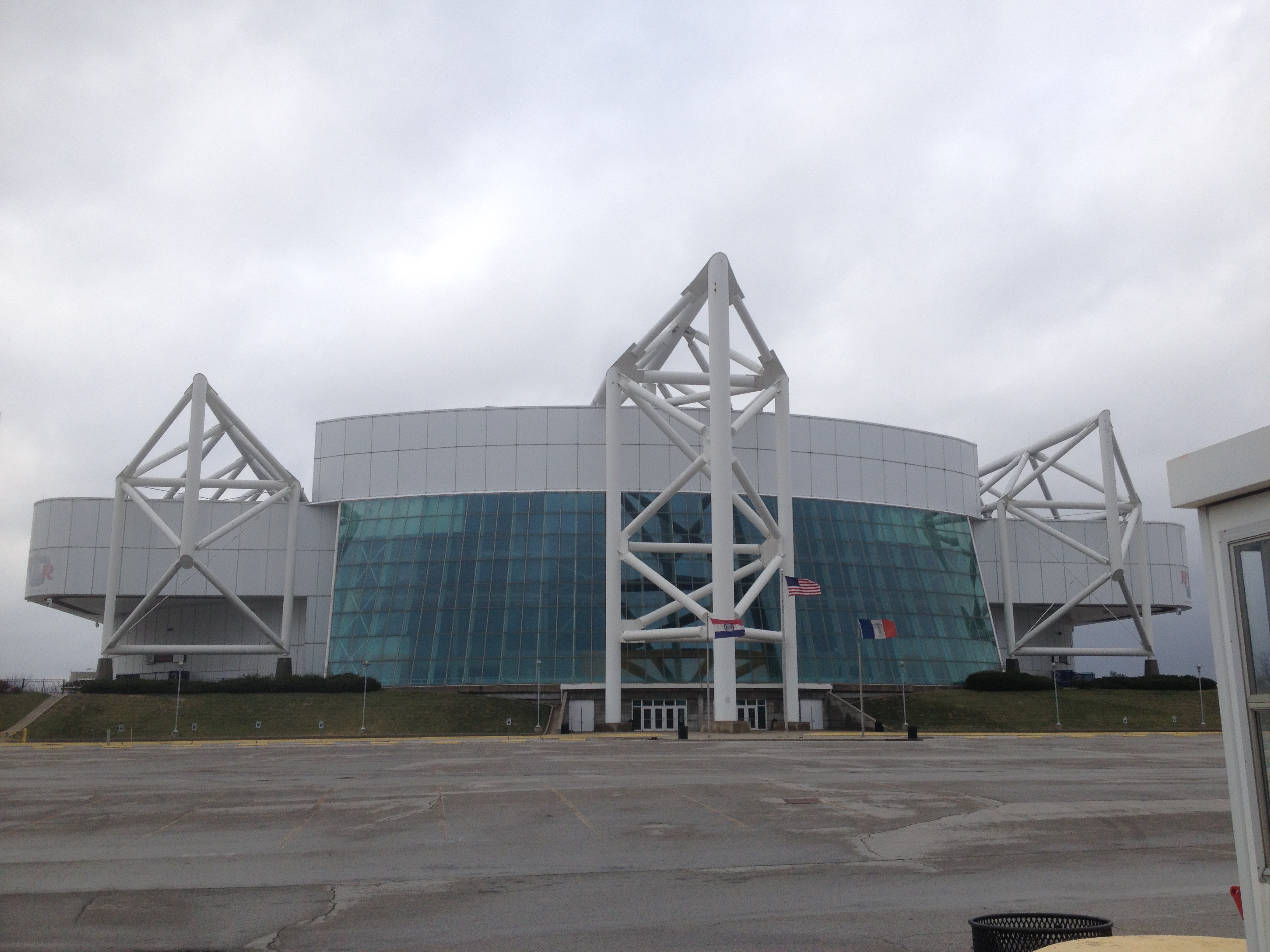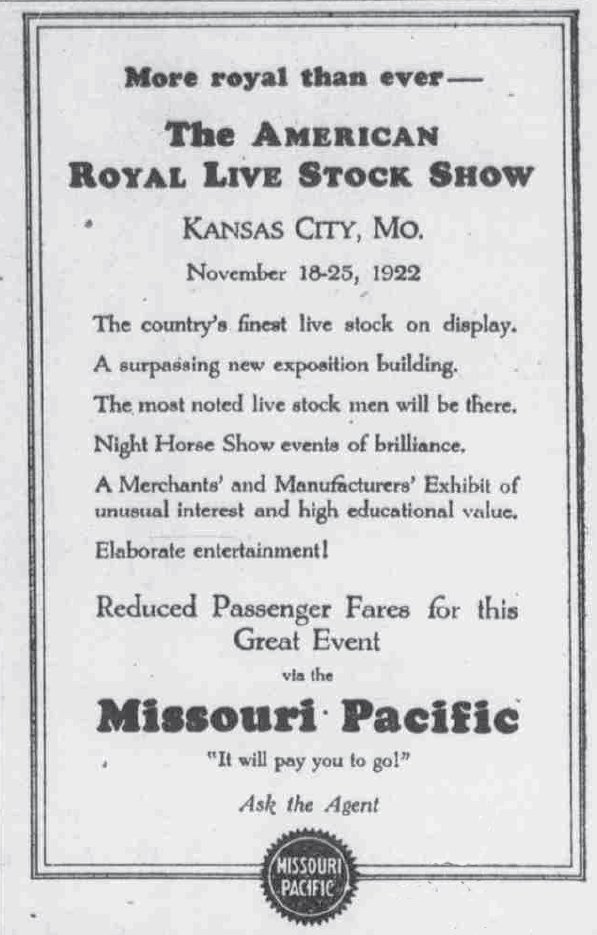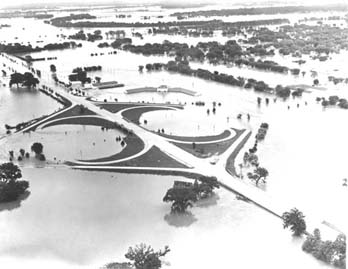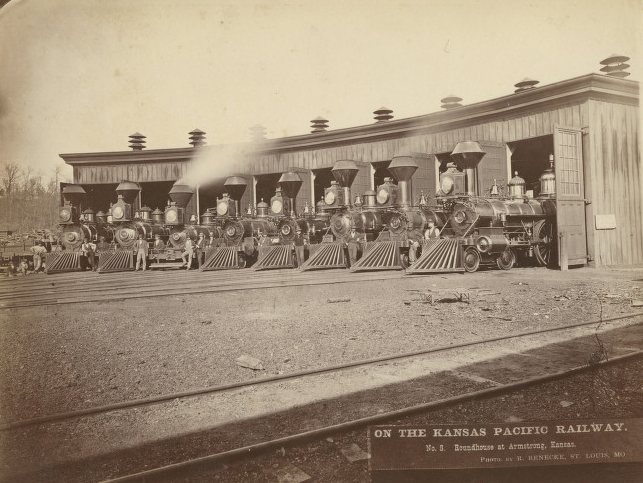|
Kansas City Stockyards
The Kansas City Stockyards in the West Bottoms west of downtown Kansas City, Missouri flourished from 1871 until closing in 1991. Jay B. Dillingham was the President of the stockyards from 1948 to its closing in 1991. History The stockyards were built to provide better prices for livestock owners. Previously, livestock owners west of Kansas City could only sell at whatever price the railroad offered. With the Kansas City Livestock Exchange and the Stockyards, cattle were sold to the highest bidder. The stockyards were built around the facilities of the Central Overland California and Pikes Peak Express Company which had outfitted travelers on the Santa Fe Trail and Oregon Trail following the Kansas River. The company went out of business in 1862 following the failure of its Pony Express business from St. Joseph, Missouri, to Sacramento, California. The stockyards were established in 1871 on the Kansas side of the Kansas River along the Kansas Pacific and Missouri Pacific ... [...More Info...] [...Related Items...] OR: [Wikipedia] [Google] [Baidu] |
West Bottoms
The West Bottoms is an industrial area immediately to the west of downtown Kansas City, Missouri. Located in Kansas City, Missouri and Kansas City, Kansas it sits at the confluence of the Missouri River and the Kansas River. The area is one of the oldest areas of the cities. While the West Bottoms is still home to several industrial buildings today, its antique shops and haunted houses are very popular. Additionally, there are several art galleries and restaurants located in the West Bottoms, and a few companies have offices in the area. History Kansas City's first Union Depot was located here. It was home to the Kansas City Live Stock Exchange and Kansas City Stockyards (now defunct) prompting the huge annual American Royal livestock show at Kemper Arena, the site of the 1976 Republican National Convention. Additionally, The West Bottoms was home to large industrial district which produced plows and tractors starting in the 1870s. Many of the factory buildings still stan ... [...More Info...] [...Related Items...] OR: [Wikipedia] [Google] [Baidu] |
Missouri Pacific
The Missouri Pacific Railroad , commonly abbreviated as MoPac, was one of the first railroads in the United States west of the Mississippi River. MoPac was a Class I railroad growing from dozens of predecessors and mergers. In 1967, the railroad operated 9,041 miles of road and 13,318 miles of track, not including DK&S, NO&LC, T&P, and its subsidiaries C&EI and Missouri-Illinois. Union Pacific Corporation, the parent company of the Union Pacific Railroad, agreed to buy the Missouri Pacific Railroad on January 8, 1980. Lawsuits filed by competing railroads delayed approval of the merger until September 13, 1982. After the Supreme Court denied a trial to the Southern Pacific, the merger took effect on December 22, 1982. However, due to outstanding bonds of the Missouri Pacific, its full merger into the Union Pacific Railroad did not become official until January 1, 1997. History On July 4, 1851, ground was broken at St. Louis on the Pacific Railroad, the predecessor of the Mi ... [...More Info...] [...Related Items...] OR: [Wikipedia] [Google] [Baidu] |
Meat Processing In The United States
Meat is animal flesh that is eaten as food. Humans have hunted, farmed, and scavenged animals for meat since prehistoric times. The establishment of settlements in the Neolithic Revolution allowed the domestication of animals such as chickens, sheep, rabbits, pigs, and cattle. This eventually led to their use in meat production on an industrial scale in slaughterhouses. Meat is mainly composed of water, protein, and fat. It is edible raw but is normally eaten after it has been cooked and seasoned or processed in a variety of ways. Unprocessed meat will spoil or rot within hours or days as a result of infection with, and decomposition by, bacteria and fungi. Meat is important to the food industry, economies, and cultures around the world. There are nonetheless people who choose to not eat meat (vegetarians) or any animal products (vegans), for reasons such as taste preferences, ethics, environmental concerns, health concerns or religious dietary rules. Terminology ... [...More Info...] [...Related Items...] OR: [Wikipedia] [Google] [Baidu] |
Agricultural Show
An agricultural show is a public event exhibiting the equipment, animals, sports and recreation associated with agriculture and animal husbandry. The largest comprise a livestock show (a judged event or display in which selective breeding, breeding stock is exhibited), a trade fair, competitions, and entertainment. The work and practices of farmers, animal fancy, animal fanciers, cowboys, and zoologists may be displayed. The terms ''agricultural show'' and ''livestock show'' are synonymous with the North American terms county fair and state fair. History The first known agricultural show was held by Salford Agricultural Society, Lancashire, in 1768. Events Since the 19th century, agricultural shows have provided local people with an opportunity to celebrate achievements and enjoy a break from day-to-day routine. With a combination of serious competition and light entertainment, annual shows acknowledged and rewarded the hard work and skill of primary producers and provided a ... [...More Info...] [...Related Items...] OR: [Wikipedia] [Google] [Baidu] |
Kemper Arena
The Hy-Vee Arena, previously known as Kemper Arena, is an indoor arena located in Kansas City, Missouri. Prior to conversion to a youth sports and community gymnasium facility, Kemper Arena was previously a 19,500-seat professional sports arena. It has hosted NCAA Final Four basketball games, professional basketball and hockey teams, professional wrestling events, the 1976 Republican National Convention, concerts, and is the ongoing host of the American Royal livestock show. It was originally named for R. Crosby Kemper Sr., a member of the powerful Kemper financial clan and who donated $3.2 million from his estate for the arena. In 2016, it was listed on the National Register of Historic Places in recognition of its revolutionary design by Helmut Jahn. History Construction Kemper Arena was built in 18 months in 1973–74 on the site of the former Kansas City Stockyards just west of downtown in the West Bottoms to replace the 8,000-seat Municipal Auditorium to play host to ... [...More Info...] [...Related Items...] OR: [Wikipedia] [Google] [Baidu] |
American Royal
The American Royal is a livestock show, horse show, rodeo, and barbecue competition held each year in September – November at various sites in the Kansas City Metropolitan Area. The Future Farmers of America (now the National FFA Organization) was founded during the annual Royal. The Kansas City Royals professional baseball team derived its name from the Royal. History The American Royal began as a cattle show in 1899 in the Kansas City Stockyards. The name "American Royal" was inspired by a 1901 editorial in beef industry publication '' Kansas City Drovers Telegram'' titled "Call it the American Royal". The editorial said the Royal Agricultural Society of England has a similar event called the Royal Show. The first American Royal horse show was added in 1907, and has grown to include five shows ( Quarter Horse Show, Hunter-Jumper Horse Show, Arabian Horse Show, American Saddlebred, Youth Horse Show, and a Cutting Horse show). In 1926, the American Royal invited voc ... [...More Info...] [...Related Items...] OR: [Wikipedia] [Google] [Baidu] |
Slaughterhouses
A slaughterhouse, also called abattoir (), is a facility where animals are slaughtered to provide food. Slaughterhouses supply meat, which then becomes the responsibility of a packaging facility. Slaughterhouses that produce meat that is not intended for human consumption are sometimes referred to as ''knacker's yards'' or ''knackeries''. This is where animals are slaughtered that are not fit for human consumption or that can no longer work on a farm, such as retired work horses. Slaughtering animals on a large scale poses significant issues in terms of logistics, animal welfare, and the environment, and the process must meet public health requirements. Due to public aversion in different cultures, determining where to build slaughterhouses is also a matter of some consideration. Frequently, animal rights groups raise concerns about the methods of transport to and from slaughterhouses, preparation prior to slaughter, animal herding, and the killing itself. History Until ... [...More Info...] [...Related Items...] OR: [Wikipedia] [Google] [Baidu] |
Great Flood Of 1951
In mid-July 1951, heavy rains led to a great rise of water in the Kansas River, Missouri River, and other surrounding areas of the Central United States. Flooding occurred in the Kansas, Neosho, Marais Des Cygnes, and Verdigris river basins. The damage in June and July 1951 across eastern Kansas and Missouri exceeded (equivalent to $ in ). The flooding killed 17 people and displaced 518,000 more. Flood The 1951 flood in Kansas began in May with the flood of the Big Creek, (a tributary of the Smoky Hill River) in Hays after eleven inches of rain in two hours. The creek overflowed, flooding Hays (the location of Fort Hays State University) to a depth of four feet in most locations inhabited by the coeds on campus, necessitating a midnight flight from the barracks (by families of the G.I. Bill) and dorms to the Stadium's third floor, which was still dry. Dr. Charles F. Wiest, Emeritus Professor of Philosophy and Religion, and his seven-year-old daughter perished when their h ... [...More Info...] [...Related Items...] OR: [Wikipedia] [Google] [Baidu] |
Chicago
(''City in a Garden''); I Will , image_map = , map_caption = Interactive Map of Chicago , coordinates = , coordinates_footnotes = , subdivision_type = Country , subdivision_name = United States , subdivision_type1 = State , subdivision_type2 = Counties , subdivision_name1 = Illinois , subdivision_name2 = Cook and DuPage , established_title = Settled , established_date = , established_title2 = Incorporated (city) , established_date2 = , founder = Jean Baptiste Point du Sable , government_type = Mayor–council , governing_body = Chicago City Council , leader_title = Mayor , leader_name = Lori Lightfoot ( D) , leader_title1 = City Clerk , leader_name1 = Anna Valencia ( D) , unit_pref = Imperial , area_footnotes = , area_tot ... [...More Info...] [...Related Items...] OR: [Wikipedia] [Google] [Baidu] |
Union Stock Yards
The Union Stock Yard & Transit Co., or The Yards, was the meatpacking district in Chicago for more than a century, starting in 1865. The district was operated by a group of railroad companies that acquired marshland and turned it into a centralized processing area. By the 1890s, the railroad capital behind the Union Stockyards was Vanderbilt money. The Union Stockyards operated in the New City community area for 106 years, helping Chicago become known as the "hog butcher for the world," the center of the American meatpacking industry for decades. The yards became inspiration for literature, and social reform. The stockyards became the focal point of the rise of some of the earliest international companies. These refined industrial innovations and influenced financial markets. Both the rise and fall of the district reflect the evolution of transportation services and technology in America. The stockyards have become an integral part of the popular culture of Chicago's history ... [...More Info...] [...Related Items...] OR: [Wikipedia] [Google] [Baidu] |
Kansas City Kansan
The ''Kansas City Kansan'' is an online newspaper that serves Kansas City and other communities in Wyandotte County, Kansas, United States. History Arthur Capper started the newspaper on January 31, 1921, when Kansas City, Kansas, did not have a daily newspaper while neighboring Kansas City, Missouri, had three dailies—the ''Kansas City Journal-Post'', ''Kansas City Times The ''Kansas City Times'' was a morning newspaper in Kansas City, Missouri, published from 1867 to 1990. The morning ''Kansas City Times'', under ownership of the afternoon '' Kansas City Star'', won two Pulitzer Prizes and was bigger than its p ...'' and '' Kansas City Star''. At its peak in the 1960s, the daily paid circulation topped 34,000. It also operated KCKN radio between 1936 and 1957. It was published daily except Sundays, Mondays and major holidays. Towards the end of its print publication, the paper converted from a daily to a twice-weekly publication. Since January 10, 2009, the ''Kansan'' ... [...More Info...] [...Related Items...] OR: [Wikipedia] [Google] [Baidu] |
Kansas Pacific
The Kansas Pacific Railway (KP) was a historic railroad company that operated in the western United States in the late 19th century. It was a federally chartered railroad, backed with government land grants. At a time when the first transcontinental railroad was being constructed by the Central Pacific and the Union Pacific, it tried and failed to join the transcontinental ranks. It was originally the "Union Pacific, Eastern Division", although it was completely independent. The Pennsylvania Railroad, working with Missouri financiers, designed it as a feeder line to the transcontinental system. The owners lobbied heavily in Washington for money to build a railroad from Kansas City to Colorado, and then to California. It failed to get funding to go west of Colorado. It operated many of the first long-distance lines in the state of Kansas in the 1870s, extending the national railway network westward across that state and into Colorado. Its main line furnished a principal transpor ... [...More Info...] [...Related Items...] OR: [Wikipedia] [Google] [Baidu] |
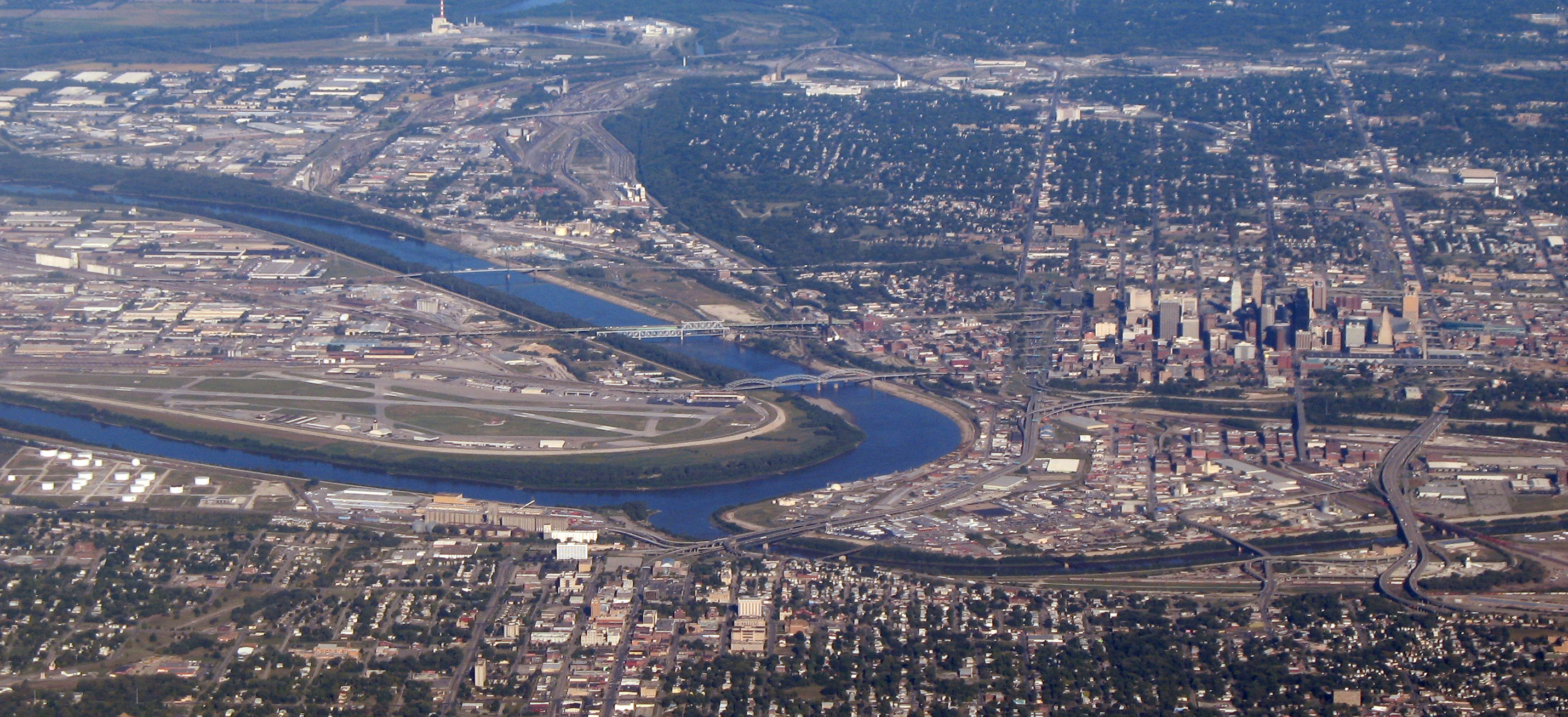
_(9933287425).jpg)


